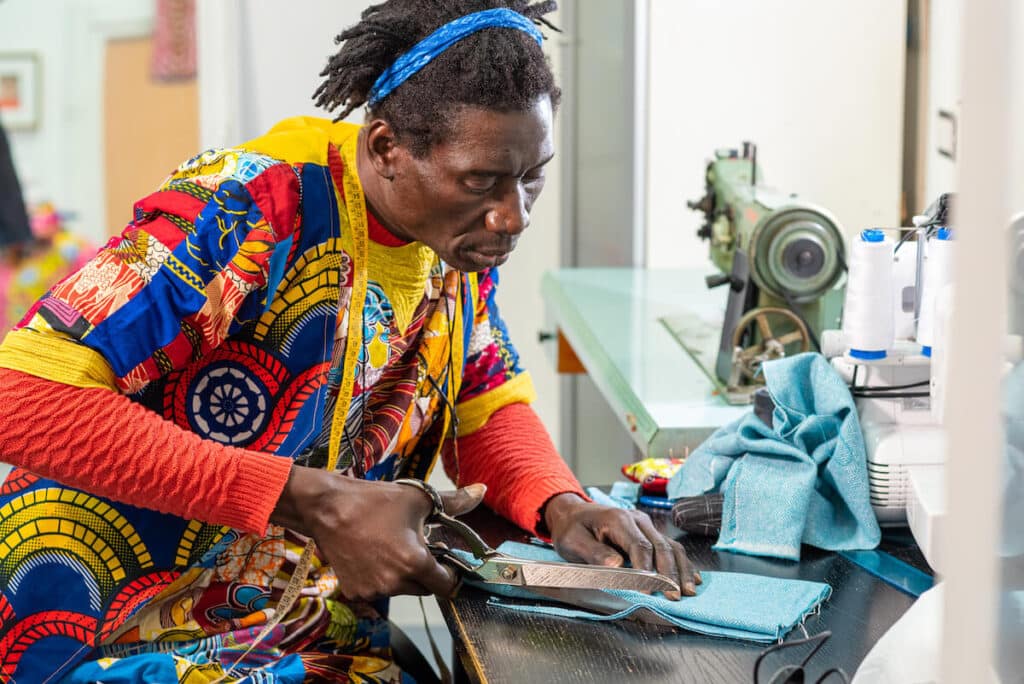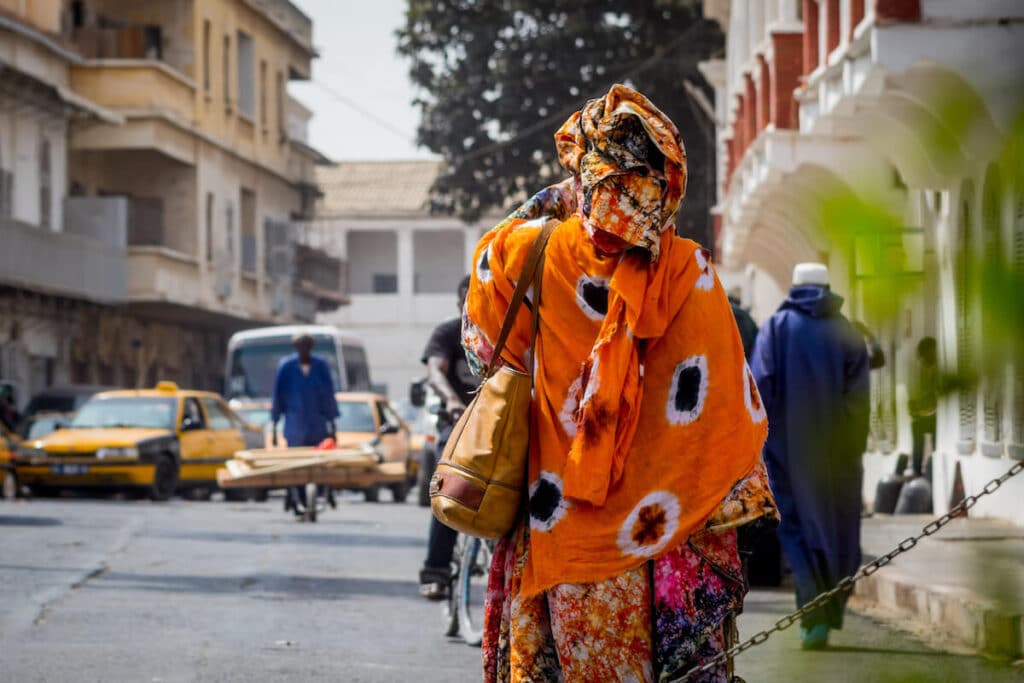If you’re thinking of traveling or sending money to Senegal, it can be helpful to understand how Senegal’s currency works. And the first thing you might want to know? Beyond the borders of Senegal, several other African countries also use the West African CFA franc. Let’s dive in.
WAEMU and the West African CFA Franc
Only the Central Bank of West African States issues and regulates the West African CFA franc.
Located in Dakar, Senegal, the central bank is known as BCEAO, which stands for Banque Centrale des États de l’Afrique de l’Ouest.
However, Senegal isn’t the only country using the West African CFA Franc. Denoted as XOF, the West African CFA franc is part of a currency bloc of West African countries.
A currency bloc is when several nations in a region use the same currency (such as the European Union).
This allows travel to and from those nations without the need to worry about exchange rates. The currency bloc monetary policy is beneficial in countries where cash is more commonly used than credit.
Currently, eight independent states in West Africa use the West African CFA Franc:
- Benin
- Burkina Faso
- Côte D’Ivoire
- Guinea-Bissau
- Mali
- Niger
- Senegal
- Togo
These eight states are members of the West African Economic and Monetary Union (WAEMU), or UEMOA as it’s known in French.
West African CFA Franc (XOF) Denominations
The West African CFA Franc or XOF comes in many denominations, including coins and banknotes.
Each franc is subdivided into 100 centimes, but no centime denominations are used. As happens with most economies, the West African CFA Franc has received many updates to the coins and banknotes issued over the years.
Here is a brief overview of XOF coins and banknotes in West African countries today, as issued by the Central Bank of West African states:
Coins:
- Since 1948, 1- and 2-franc coins have been available.
- Since 1956, there have also been 5-, 10-, and 25-franc coins.
- Starting in 1967, the 100-franc coin became available.
- In 2003, both 200- and 500-franc coins began circulating.
Banknotes:
- The BCEAO originally issued banknotes in denominations of 5, 10, 25, 50, 100, and 1,000 francs.
- In 1946, a 500-franc note also joined the mix.
- A 5,000-franc note became available in 1948.
- Since the issuance of the 200- and 500-franc coins noted above in 2003, however, fewer of the smaller denomination notes are in use. The 50-franc note was last issued by the BCEAO in 1959, for example, and 100-franc notes have not been issued since 1965.
- A 10,000-franc note has been available since 1977.
- A 2,500-franc note has been available since 1992.
- Since 2004, the central bank has also issued 1,000, 2,000, 5,000, and 10,000 CFA francs with updates made to the look of the currency itself.
On forex currency exchanges, the West African CFA franc has a code of XOF. One of the most surprising parts about the Senegal currency is that the West African CFA franc has a fixed exchange rate to the euro.
It does not have a fixed exchange rate to the U.S. dollar (USD) or the United Kingdom’s pound sterling (GBP) though.
5 Facts About the Senegal West African CFA Franc (XOF)

1. Its name has colonial roots.
Except for Guinea-Bissau, the rest of the member states of the West African Economic and Monetary Union were previously colonies of France.
“CFA” originally stood for “Colonies francaises d’Afrique,” which translates to “French Colonies in Africa.”
Now, however, the acronym “CFA” stands for Communauté Financière Africaine, which means “African Financial Community.”
2. CFA franc can also mean Central African CFA franc.
There’s another currency commonly called the CFA franc as well. It’s the Central African CFA franc.
While of equal value to the West African CFA franc, they’re separate currencies. The Central African Economic and Monetary Union (CAEMC) is the other currency bloc using this currency name.
They have also replaced the CFA in CFA franc, this time to “Coopération Financière en Afrique Centrale,” which translates to “Financial Cooperation in Central Africa.”
3. The Eco may replace the West African CFA franc.
While the West African CFA franc has been widely used for decades, there is a new currency under consideration that may replace the West African CFA franc. The new currency is called the Eco.
Originally, the West African monetary union proposed that the Eco become the common currency in the region by 2020, but the new currency couldn’t be implemented due to the COVID-19 pandemic.
However, it’s still under consideration as a replacement currency in the coming years in order to reduce the role of the French treasury in West Africa’s monetary policy.
4. The CFA franc underwent intentional devaluation in 1994.
There was a 50% devaluation of the fixed exchange rate between the French franc and the West African CFA franc in 1994. This was done to help the region’s exports.
According to the International Monetary Fund (IMF), the fixed exchange rate at the time was high enough that it made their goods appear to be priced too high, which limited export growth.
The devaluation brought the exchange rate at the time to one French franc equaling 100 CFA francs. Now, the West African CFA franc as well as the French franc have a fixed exchange rate pegged to the euro.
5. The newest CFA franc denominations have enhanced security.
The more recent update of XOF banknotes in 2004, which saw the introduction of 1,000-, 2,000-, 5000-, and 10,000-franc notes, also included new enhanced security features.
These banknotes are more difficult to copy, which can help to reduce the incidences of counterfeit bills in circulation. Another surprising move by the BCEAO was it issued the new banknotes because the old ones had a reputation for carrying diseases—true story.
Understanding Senegal West African CFA Franc (XOF) Currency Exchange Rates

When sending or exchanging money to or from Senegal or other West African member states using the West African CFA franc, it’s important to understand how the exchange rate works.
The Senegal currency has a fixed exchange rate between the West African CFA franc and the euro. That means it does not fluctuate on the Forex foreign exchange as some other currencies do.
In part, a fixed exchange rate is designed to create more certainty for exporters and importers.
Sending Money to Senegal
Any time you’re sending money to Senegal, Remitly can help. Remitly makes international money transfers faster, easier, more transparent, and more affordable. Our reliable and easy-to-use mobile app is trusted by over 5 million people around the world.
Download the app today to give it a try.
